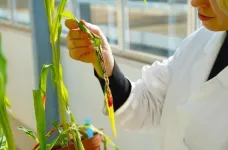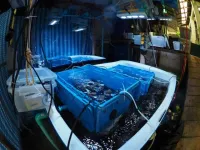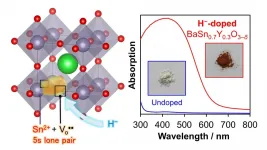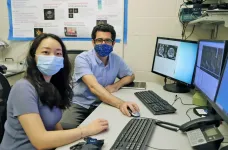(Press-News.org) To understand the world, we arrange individual objects, people, and events into different categories or concepts. Concepts such as 'the telephone' consist primarily of visible features, i.e. shape and color, and sounds, such as ringing. In addition, there are actions, i.e. how we use a telephone.
However, the concept of telephone does not only arise in the brain when we have a telephone in front of us. It also appears when the term is merely mentioned. If we read the word "telephone", our brain also calls up the concept of telephone. The same regions in the brain are activated that would be activated if we actually saw, heard, or used a telephone. The brain thus seems to simulate the characteristics of a telephone when its name alone is mentioned.
Until now, however, it was unclear, depending on the situation, whether the entire concept of a telephone is called up or only individual features such as sounds or actions and whether only the brain areas that process the respective feature become active. So, when we think of a telephone, do we always think of all its features or only the part that is needed at the moment? Do we retrieve our sound knowledge when a phone rings, but our action knowledge when we use it?
Researchers at the Max Planck Institute for Human Cognitive and Brain Sciences in Leipzig have now found the answer: It depends on the situation. If, for example, the study participants thought of the sounds associated with the word "telephone", the corresponding auditory areas in the cerebral cortex were activated, which are also activated during actual hearing. When thinking about using a telephone, the somatomotor areas that underlie the involved movements came into action.
In addition to these sensory-dependent, so-called modality-specific areas, it was found that there are areas that process both sounds and actions together. One of these so-called multimodal areas is the left inferior parietal lobule (IPL). It became active when both features were requested.
The researchers also found out that, in addition to characteristics based on sensory impressions and actions, there must be other criteria by which we understand and classify terms. This became apparent when the participants were only asked to distinguish between real and invented words. Here, a region that was not active for actions or sounds kicked in: the so-called anterior temporal lobe (ATL). The ATL therefore seems to process concepts abstractly or "amodally", completely detached from sensory impressions.
From these findings, the scientists finally developed a hierarchical model to reflect how conceptual knowledge is represented in the human brain. According to this model, information is passed on from one hierarchical level to the next and at the same time becomes more abstract with each step. On the lowest level, therefore, are the modality-specific areas that process individual sensory impressions or actions. These transmit their information to the multimodal regions such as the IPL, which process several linked perceptions simultaneously, such as sounds and actions. The amodal ATL, which represents features detached from sensory impressions, operates at the highest level. The more abstract a feature, the higher the level at which it is processed and the further it is removed from actual sensory impressions.
"We thus show that our concepts of things, people, and events are composed, on the one hand, of the sensory impressions and actions associated with them and, on the other hand, of abstract symbol-like features," explains Philipp Kuhnke, lead author of the study, which was published in the renowned journal Cerebral Cortex. "Which features are activated depends strongly on the respective situation or task" added Kuhnke.
In a follow-up study in Cerebral Cortex, the researchers also found that modality-specific and multimodal regions work together in a situation-dependent manner when we retrieve conceptual features. The multimodal IPL interacted with auditory areas when retrieving sounds, and with somatomotor areas when retrieving actions. This showed that the interaction between modality-specific and multimodal regions determined the behavior of the study participants. The more these regions worked together, the more strongly the participants associated words with actions and sounds.
The scientists investigated these correlations with the help of various word tasks that the participants solved while lying in a functional magnetic resonance imaging (fMRI) scanner. Here, they had to decide whether they strongly associated the named object with sounds or actions. The researchers showed them words from four categories: 1) objects associated with sounds and actions, such as "guitar", 2) objects associated with sounds but not with actions, such as "propeller", 3) objects not associated with sounds but with actions, such as "napkin", and 4) objects associated neither with sounds nor with actions, such as "satellite".
INFORMATION:
To infect its host plant maize, the fungal parasite Ustilago maydis uses a complex of seven proteins. Numerous findings reveal an essential role of the complex in causing disease and suggest a widespread occurence in fungal plant pathogens.
Each year, fungal plant pathogens such as rusts, rice blast and mildews destroy huge amounts of cereal crops that could feed millions of people. Many of these fungi are biotrophic pathogens: Instead of killing their host plants, they manipulate host cells to assure that these sustain fungal growth. Among these pathogens, the corn smut fungus Ustilago maydis has emerged as a model for basic research on biotrophic fungi.
During the infection, U. maydis releases an entire cocktail of so-called ...
7 May 2021/Kiel. Corals are the backbone of marine ecosystems in the tropics. They are threatened by rising water temperatures caused by global warming and they are among the first ecosystems worldwide that are on the verge of ecological collapse. Coral bleaching, which is becoming stronger and more frequent due to heat stress, has already wiped out corals at many locations globally. With the help of a microbiome-targeting strategy developed by an international team led by GEOMAR Helmholtz Centre for Ocean Research Kiel, it could become feasible to help protect corals from heat stress. The work has now been published in the international journal Microbiome.
Corals are the backbone of marine ecosystems in the tropics. They are threatened by rising water temperatures caused by global warming ...
Narrow-gap semiconductors with the ability to use visible light have garnered significant interest thanks to their versatility. Now, scientists in Japan have developed and characterized a new semiconductor material for application in process components stimulated by light. The findings have, for the first time, suggested a new way to reduce the band gap in cheaper and non-toxic tin-based oxide semiconductors for efficient light-based applications.
Semiconductors that can exploit the omnipresent visible spectrum of light for different technological applications would serve as a boon to the material world. However, such semiconductors often do not come cheap and can often be toxic. Now, a group of material scientists ...
May 7, 2021 - Among collegiate football players and other athletes, Black athletes recognize fewer concussion-related symptoms than their White counterparts, reports a study in the May/June issue of the Journal of Head Trauma Rehabilitation (JHTR). The official journal of the Brain Injury Association of America, JHTR is published in the Lippincott portfolio by Wolters Kluwer.
"Despite NCAA concussion education requirements for athletes, Black collegiate-athletes were found to have lower concussion symptom knowledge than White collegiate-athletes," according to the new research by Jessica Wallace, PhD, MPH, LAT, ATC, of University of Alabama, Tuscaloosa, and colleagues. The ...
RNA-based drugs have the potential to change the standard of care for many diseases, making personalized medicine a reality. This rapidly expanding class of therapeutics are cost-effective, fairly easy to manufacture, and able to go where no drug has gone before, reaching previously undruggable pathways.
Mostly.
So far, these promising drugs haven't been very useful in getting through to the well-protected brain to treat tumors or other maladies.
Now a multi-institutional team of researchers, led by Costas Arvanitis at the Georgia Institute of Technology and Emory University, has figured out a way: using ultrasound and RNA-loaded nanoparticles to get through the protective blood-brain barrier and deliver potent medicine to brain tumors.
"We're able to make this drug more available ...
Some meat eaters feel disgusted by meat, according to a new study.
University of Exeter scientists showed food pictures to more than 700 people, including omnivores (who eat meat and other foods), flexitarians (who try to eat less meat) and vegetarians.
About 7% of meat eaters (15% of flexitarians and 3% of omnivores) had a "fairly strong disgust response" to images of meat dishes commonly eaten in the UK, like roast chicken or bacon.
As a group, omnivores rated meat images about twice as disgusting on average as pictures of carbohydrate-rich foods like bread, chips and rice.
Based on the findings, the researchers say harnessing the "yuk factor" may ...
Ikoma, Japan - Many natural compounds have various anti-inflammatory and other beneficial properties that humans have been utilizing for medicinal purposes for hundreds of years. However, the specific molecular mechanisms behind these health-promoting effects are not always clear. One such compound is 1'-acetoxychavicol acetate, or ACA, which comes from the tropical ginger Alpinia plant. Now, researchers from Nara Institute of Science and Technology (NAIST) have identified how ACA can help in the treatment of inflammatory diseases.
In a report published in International Immunology, they found that ACA attenuates mitochondrial damage through decreasing mitochondrial reactive oxygen species (ROS), blocking ...
Scientists from Nanjing University and University of Macau have discovered nano-scaled apoptotic bodies (ABs) as a new brain-targeting drug carrier, bringing new promise for the Parkinson's Disease as well as other brain diseases.
The blood-brain barrier (BBB) is the most restrictive barrier that keeps most biomolecules and drugs from the brain, setting "barriers" for the treatment of cerebrovascular diseases. With the increasingly serious ageing problem, the treatment of brain diseases now faces tough challenges, and therefore efficient brain drug delivery ...
Cosmologists have found a way to double the accuracy of measuring distances to supernova explosions - one of their tried-and-true tools for studying the mysterious dark energy that is making the universe expand faster and faster. The results from the Nearby Supernova Factory (SNfactory) collaboration, led by Greg Aldering of the Department of Energy's Lawrence Berkeley National Laboratory (Berkeley Lab), will enable scientists to study dark energy with greatly improved precision and accuracy, and provide a powerful crosscheck of the technique across vast distances ...
Computer science researchers at the University of Central Florida have developed a sarcasm detector.
Social media has become a dominant form of communication for individuals, and for companies looking to market and sell their products and services. Properly understanding and responding to customer feedback on Twitter, Facebook and other social media platforms is critical for success, but it is incredibly labor intensive.
That's where sentiment analysis comes in. The term refers to the automated process of identifying the emotion -- either positive, negative or neutral -- associated with text. While ...






